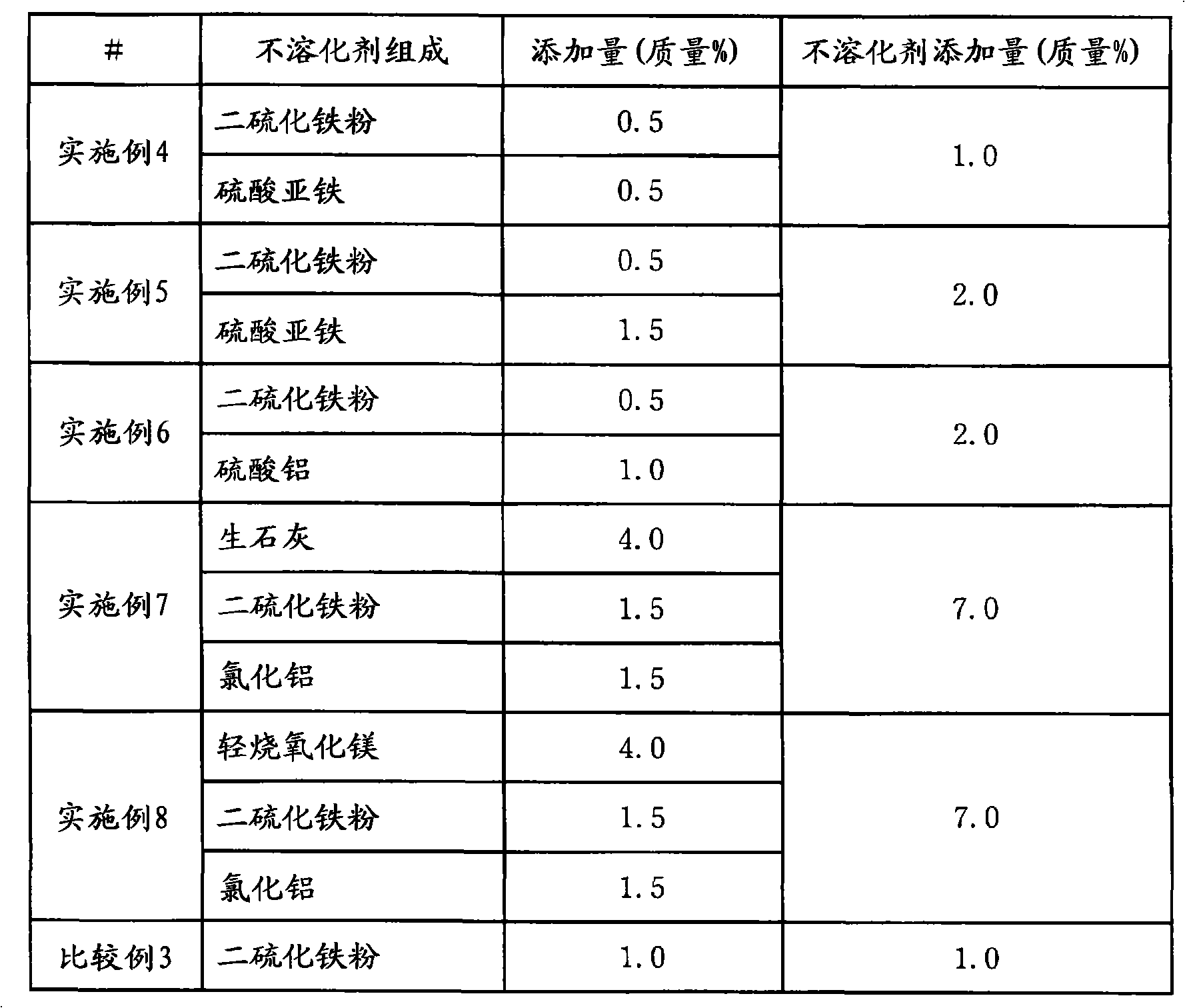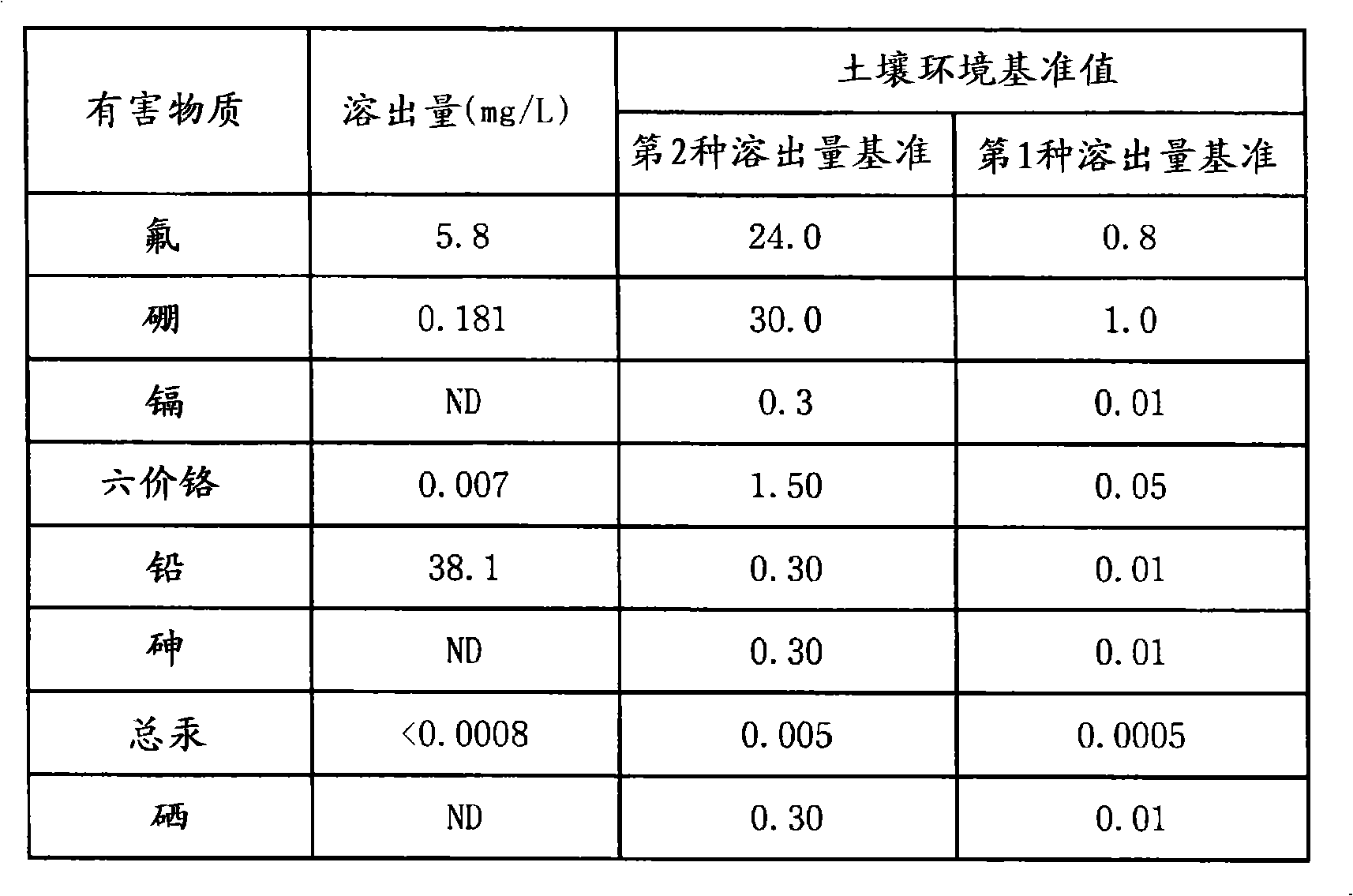Encapsulating agent for harmful substances and method for encapsulation of harmful substances
A technology of harmful substances and solubilizers, applied in chemical instruments and methods, combustion methods, solid waste removal, etc., can solve the problems of expensive chelating agents, environmental degradation, etc., and achieve the effect of simple treatment
- Summary
- Abstract
- Description
- Claims
- Application Information
AI Technical Summary
Problems solved by technology
Method used
Image
Examples
Embodiment 1
[0081] Potassium dichromate was added to the soil, and the contaminated soil with the hexavalent chromium content in the soil adjusted to 200mg / kg was simulated, and it was stored in a moist state for 1 week.
[0082] The insolubilizers and water shown in Table 1 were added to this contaminated soil, kneaded for 3 minutes with a mortar mixer, and then stored at a constant temperature of 20° C. for 1 week. Using each sample, a dissolution test was implemented in accordance with the method shown in Notification No. 46 of the Ministry of the Environment in 2013. The results are shown in Table 2.
[0083] The elution amount of hexavalent chromium in the soil to which the insolubilizer was not added was 17 mg / L, which was a very large value. In Comparative Example 2 to which 1.5% by mass of iron disulfide powder was added, the elution amount of hexavalent chromium was very low, but the first soil environmental standard was still not satisfied. Adding alunite or calcined gypsum as...
Embodiment 2
[0090] Add lead nitrate to the soil, simulate the production of contaminated soil with the lead content in the soil adjusted to 3000mg / kg, and store it in a moist state for 1 week. The insolubilizer and water shown in Table 3 were added to the contaminated soil, and after kneading with a mortar mixer for 3 minutes, a compressive strength test specimen of φ50mm and H100mm was produced according to the Cement Association standard JCAS L-01:2003. This test piece was stored at a constant temperature of 20° C. for one week, and a compressive strength test was performed. Furthermore, the test pieces subjected to the compressive strength test were pulverized, and the dissolution test was performed according to the method shown in the Ministry of the Environment Notification No. 46. The results are shown in Table 4.
[0091] [table 3]
[0092]
[0093] Here, the iron disulfide powder (pyrite powder) was used as a pulverized product made in China (Fe: 43%, S: 47%, particle size -1...
Embodiment 3
[0098] In this example, the insolubilization treatment of alkaline incineration ash was performed.
[0099] The elution suppression of incineration fly ash having the composition in Table 5 and the characteristics of the harmful substance content in Table 6 was studied. The ash has a general composition of alkaline incineration ash and contains a lot of lead and fluorine.
[0100] Table 7 shows the results of the dissolution test of this ash in accordance with the method specified in Ministry of the Environment Ordinance No. 46. The elution amount of lead in the incineration ash exceeds the second elution amount standard which is the acceptance standard to the processing site. In addition, since incineration ash contains a large amount of calcium, the leached amount of fluorine is not so much, and it is below the second leached amount standard. For other harmful substances, the results were all below the standard, and it is known that the effective treatment of lead is the m...
PUM
 Login to View More
Login to View More Abstract
Description
Claims
Application Information
 Login to View More
Login to View More - R&D
- Intellectual Property
- Life Sciences
- Materials
- Tech Scout
- Unparalleled Data Quality
- Higher Quality Content
- 60% Fewer Hallucinations
Browse by: Latest US Patents, China's latest patents, Technical Efficacy Thesaurus, Application Domain, Technology Topic, Popular Technical Reports.
© 2025 PatSnap. All rights reserved.Legal|Privacy policy|Modern Slavery Act Transparency Statement|Sitemap|About US| Contact US: help@patsnap.com


